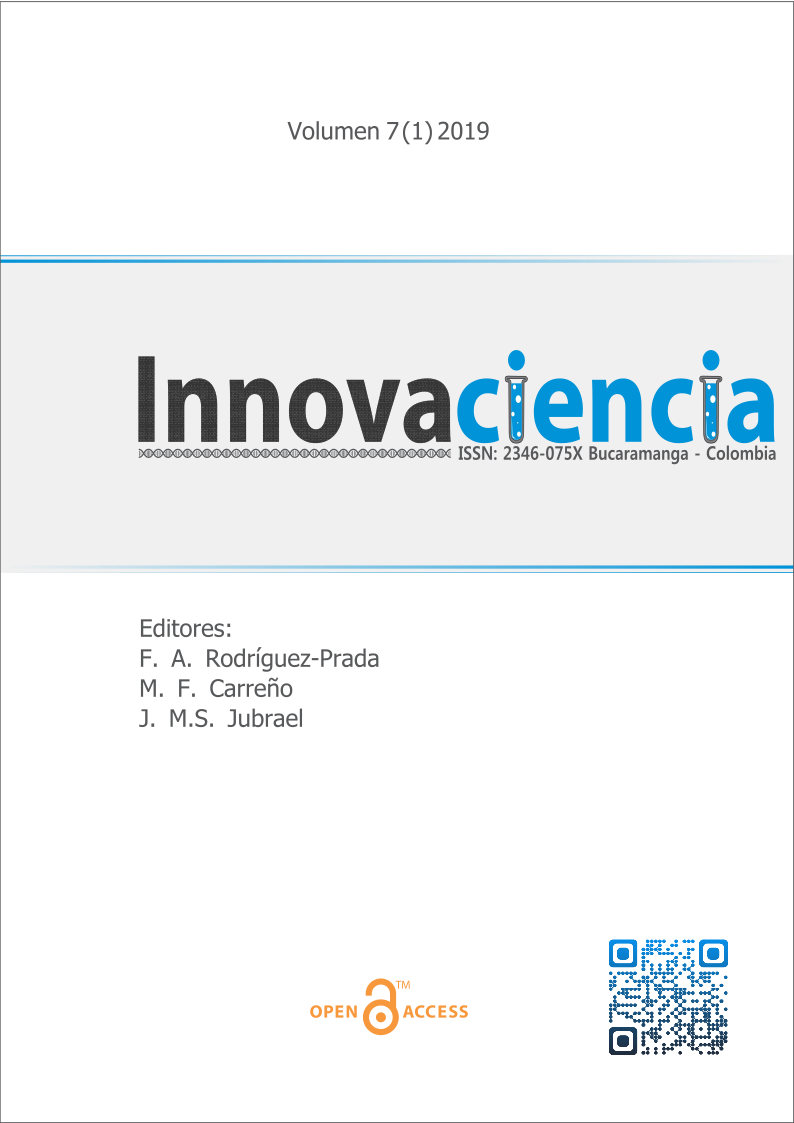Tipos de tensiones mecánica y térmica en la primera etapa de la pala del rotor de una turbina
DOI:
https://doi.org/10.15649/2346075X.513Palabras clave:
Simulation; X20Cr13; Steam turbine; ANSYSResumen
Introduction: In this paper, the simulation of first stage of low pressure turbine for Nasiriya Power Plant was done to study the aerodynamic characteristic of steam along stage at load 70 MW, also the two types of mechanical stresses on the first stage rotor blade were studied in this paper. Materials and Methods:The material of blade was X20Cr13 stainless steel grade 1.4021. The first type of mechanical stresses which due to the steam pressure on the blade was analyzed. The seconds types of mechanical stresses that the centrifugal stresses on the blade. The AutoCAD software code was used for modeling the turbine stage, the dimensions and operational conditions were obtained practically from Nasiriya power plant and ANSYS (15.0) software was used to make simulate the turbine. Results and Discussion: The results showed that maximum steam velocity occurred at trailing edge of stationary blades and leading edge of rotating blades, also the maximum stresses occurred at the leading edge and trailing edge of root blade, the stresses due to the effect of centrifugal force is larger than the stresses due the pressure force. Conclusions: The maximum deformation occurred at tip of blade and minimum deformation depicted at root of blade.
Referencias
Rajput R. A text book of Thermal Engineering. Laxmi publication. First edition, 1993; 755- 880.
Heidari M and Amini K. Structural modification of a steam turbine blade," Materials Science and Engineering. 2017; 203(1). https://doi.org/10.1088/1757-899X/203/1/012007
Mattingly J. Elements of gas turbine propulsion. Tata McGraw-Hill edition.1996.
Reddy A, et al. Analysis of Steam Turbines," International Refereed Journal of Engineering and Science. 2014; 3(2) :32-48.
Al-Taie A. Stress Evaluation of Low Pressure Steam Turbine Rotor Blade and Design of Reduced Stress Blade. Engineering and Technology Journal. 2008; 26 (2):169-179.
Ali, M and AL-sahib N. Effect of the Mechanical and Thermal Stresses of Rotating Blades. Al-Khwarizmi Engineering Journal. 2007; 3(2): 32-48.
Tenango O, et al. Numerical calculation of thermal stresses in a micro gas turbine. Memorials del xix congreso internacional annual dela somin, 2015.
Rogowski K and Pawlicki, J. Numerical analysis of the steam flow past the turbine blade stage," Journal of Machine Engineering. 2017; 17(2): 102-110.
Issa S. General Directorate of Electricity Production in Nasiriyah, "Nasiriyah Thermal Power Plant" Training on Turbine Operation K-210-130.
Iacovides H, Kelemenis G. and Raisee M. Flow and heat transfer in straight cooling passages with inclined ribs on opposite walls: an experimental and computational study. Experimental Thermal and Fluid Science. 2003: 27(3): 283-294. https://doi.org/10.1016/S0894-1777(02)00298-4
ANSYS FLUENT Theory Guide, Release 14.0, 2011
Launder B, and Spalding D. The Numerical Computation of Turbulent Flow. Computer Methods in Applied Mechanics and Engineering. 1974: 3(2): 269-289. https://doi.org/10.1016/0045-7825(74)90029-2
Heran E. Mechanics of Materials 1: An Introduction to the Mechanics of Elastic and Plastic Deformation Solids and Structural Materials. Butterworth-Heine-mann, London. 1997
Tahir H. Mechanical Design of Moldboard Plow Bottom Throe Stresses Analysis and Performance Measurement. PhD Thesis, University of Mosul.2004.

Descargas
Publicado
Cómo citar
Número
Sección
Altmetrics
Descargas
Licencia
Todos los artículos publicados en esta revista científica están protegidos por los derechos de autor. Los autores retienen los derechos de autor y conceden a la revista el derecho de primera publicación con el trabajo simultáneamente licenciado bajo una Licencia Creative Commons Atribución-NoComercial 4.0 Internacional (CC BY-NC 4.0) que permite compartir el trabajo con reconocimiento de autoría y sin fines comerciales.
Los lectores pueden copiar y distribuir el material de este número de la revista para fines no comerciales en cualquier medio, siempre que se cite el trabajo original y se den crédito a los autores y a la revista.
Cualquier uso comercial del material de esta revista está estrictamente prohibido sin el permiso por escrito del titular de los derechos de autor.
Para obtener más información sobre los derechos de autor de la revista y las políticas de acceso abierto, por favor visite nuestro sitio web.



















